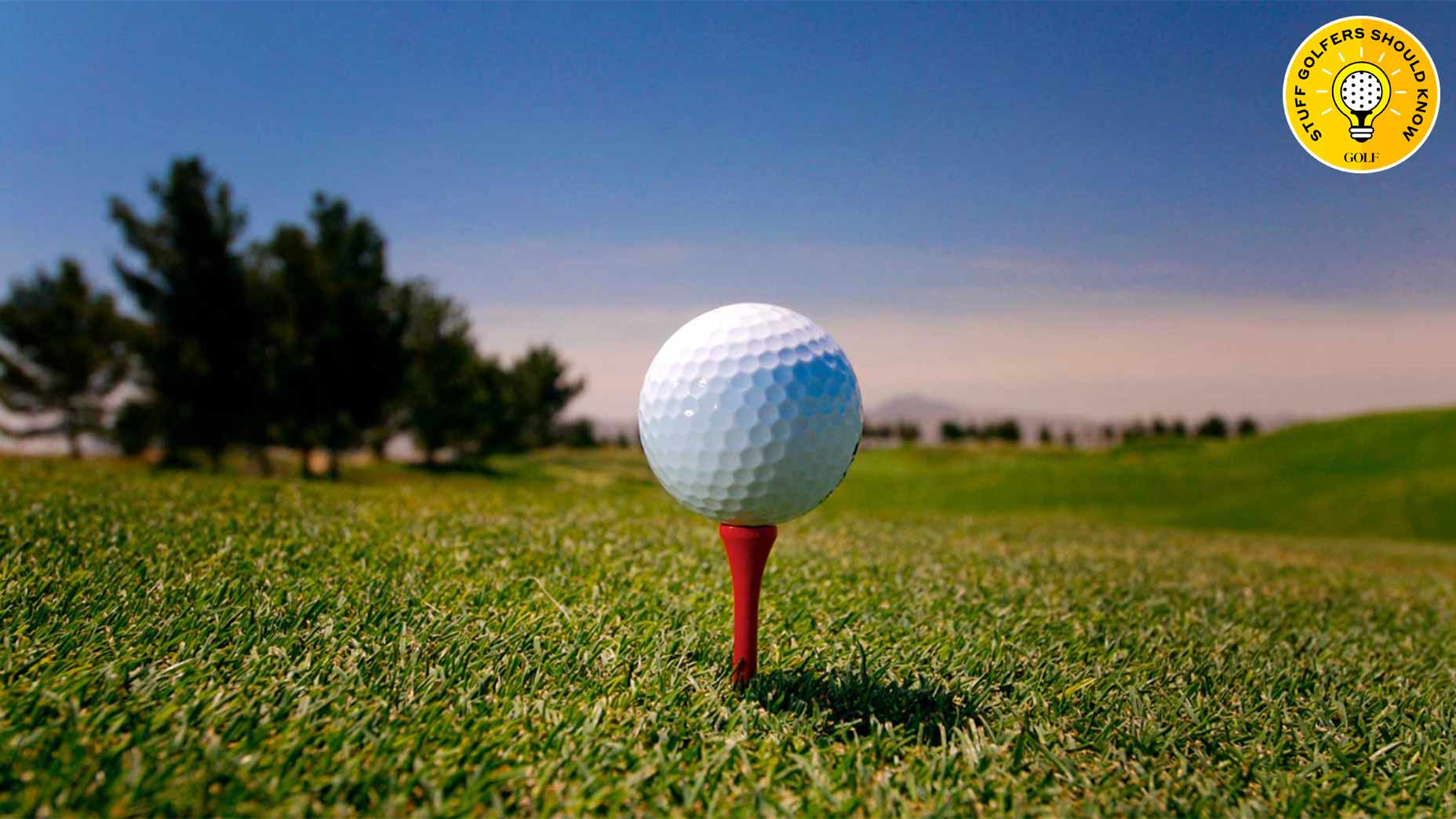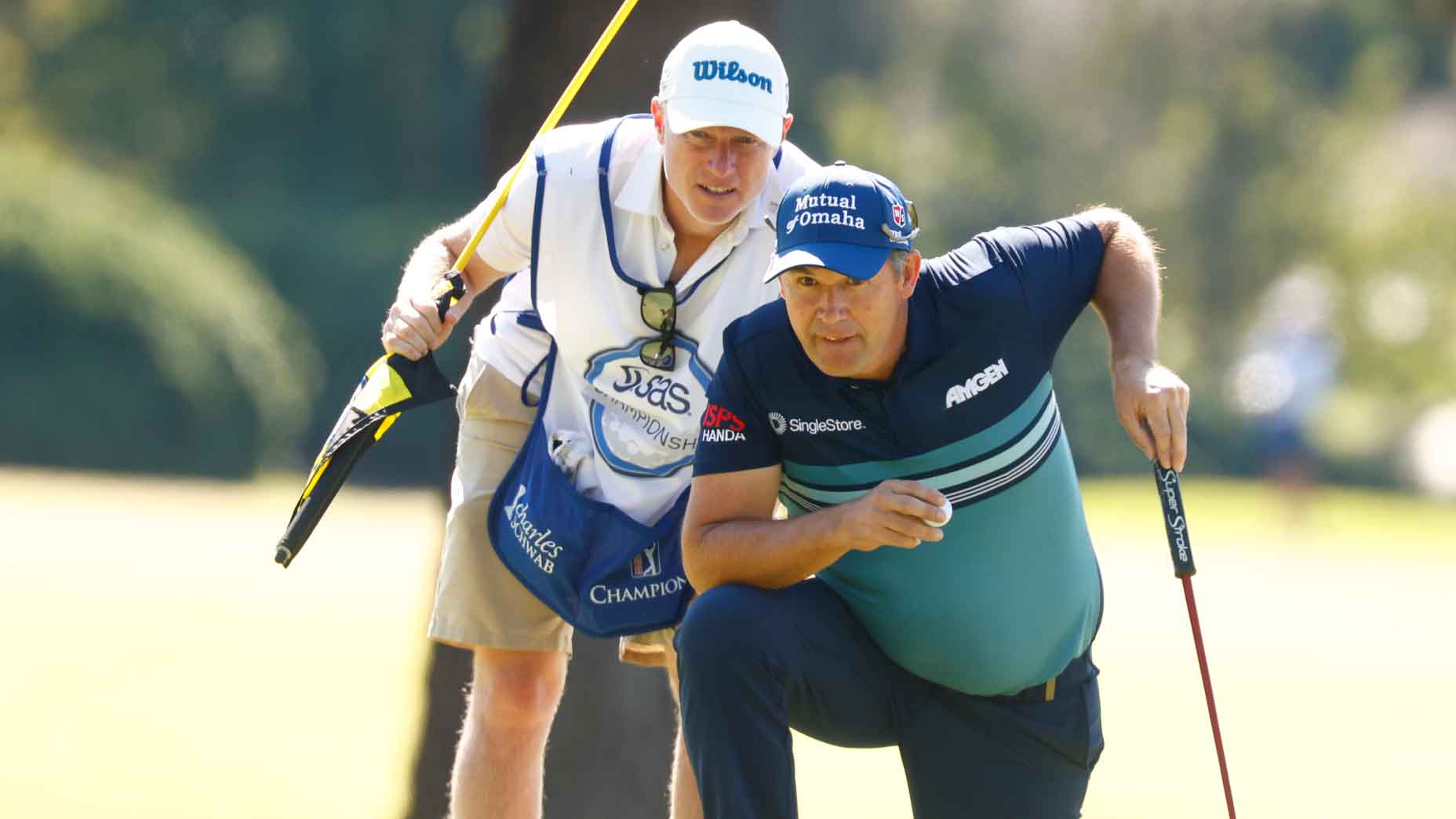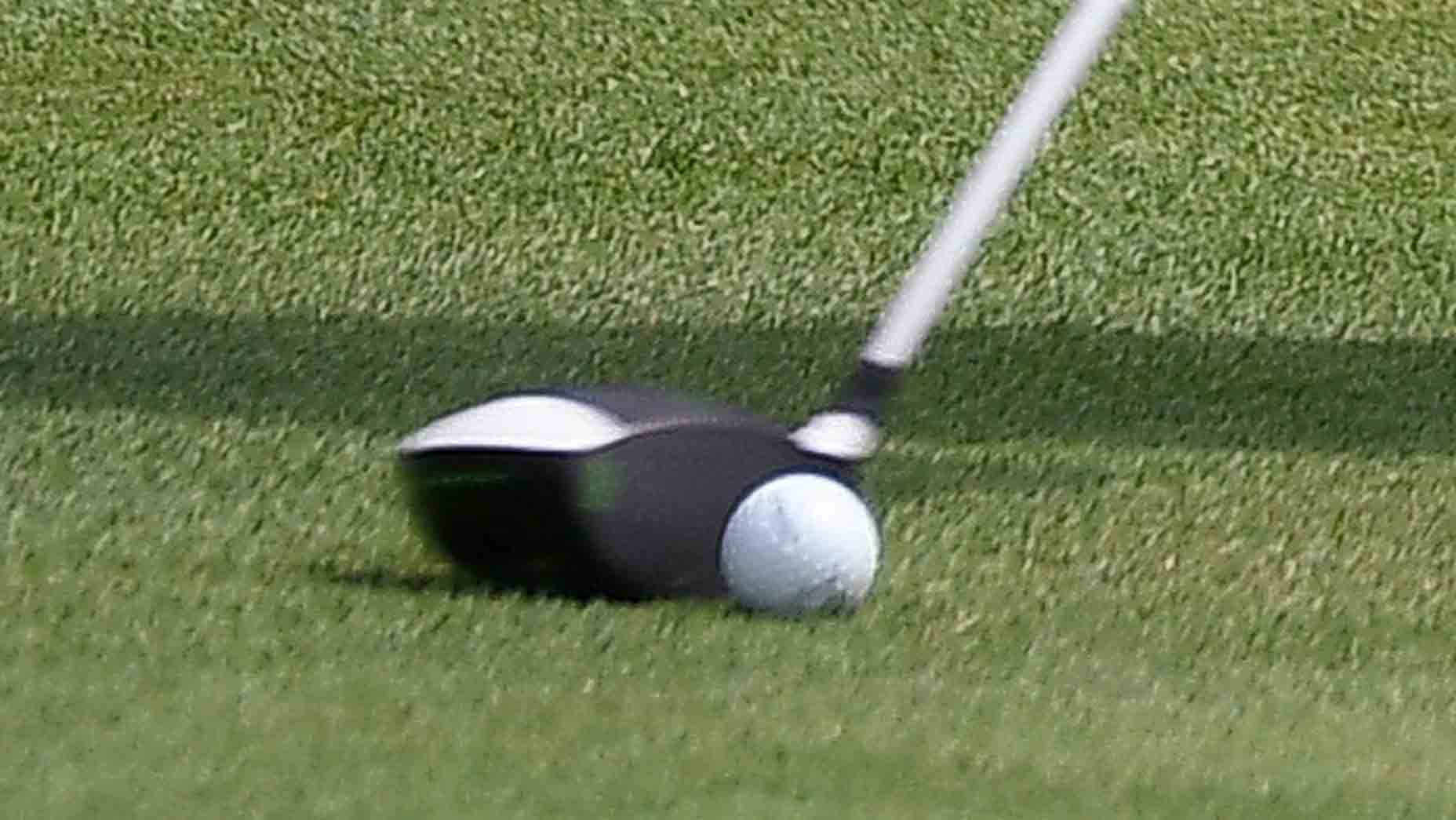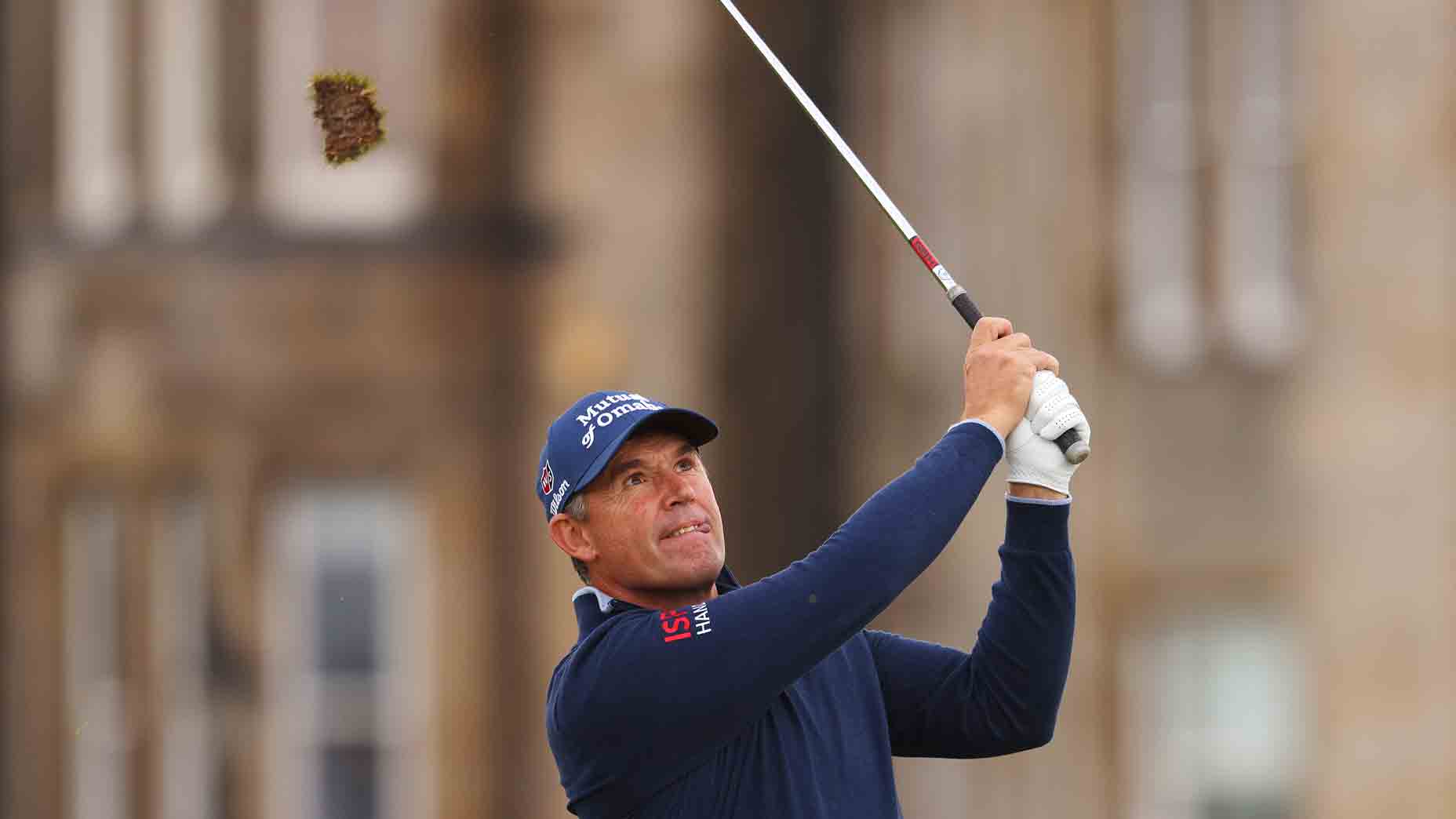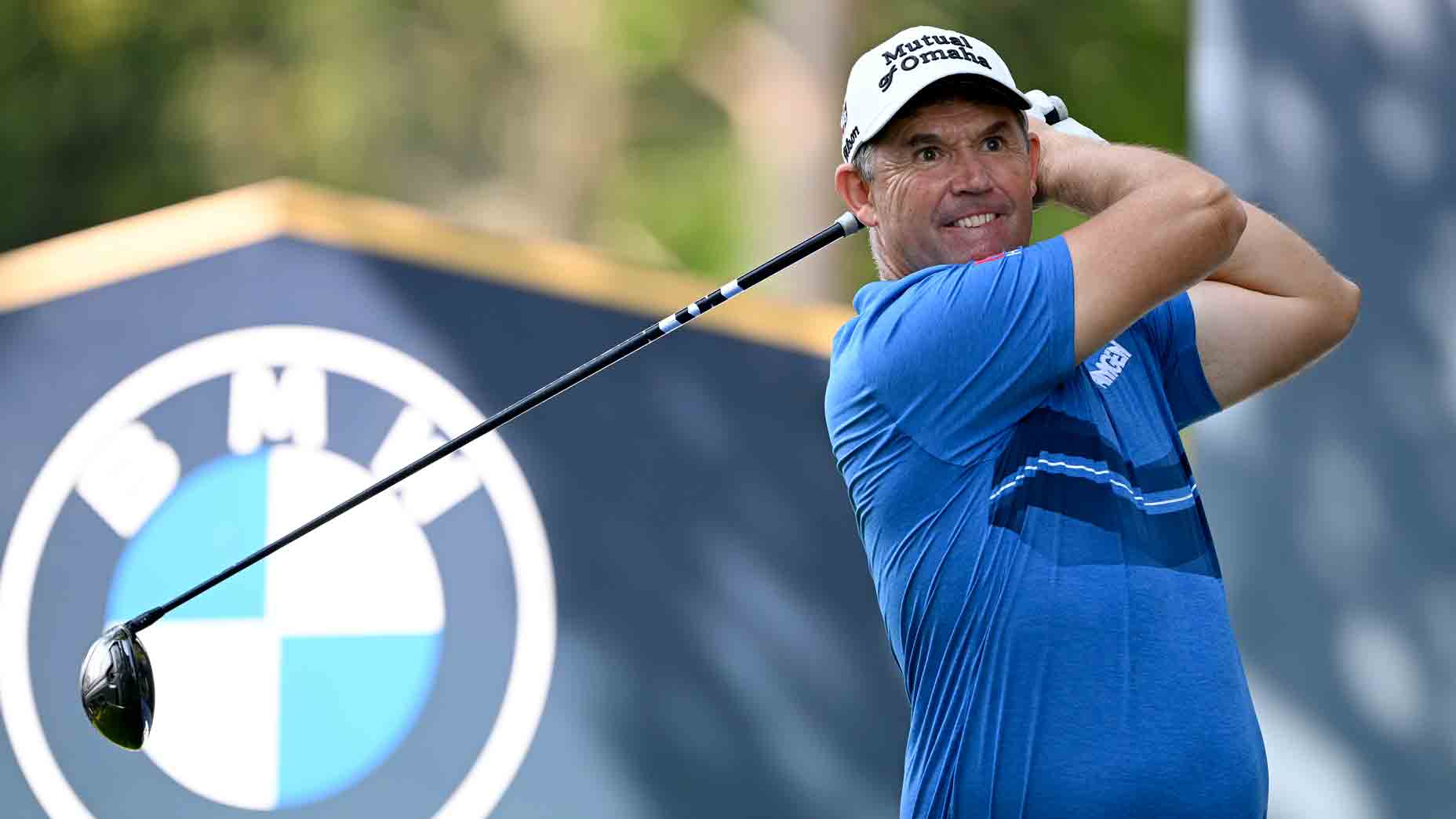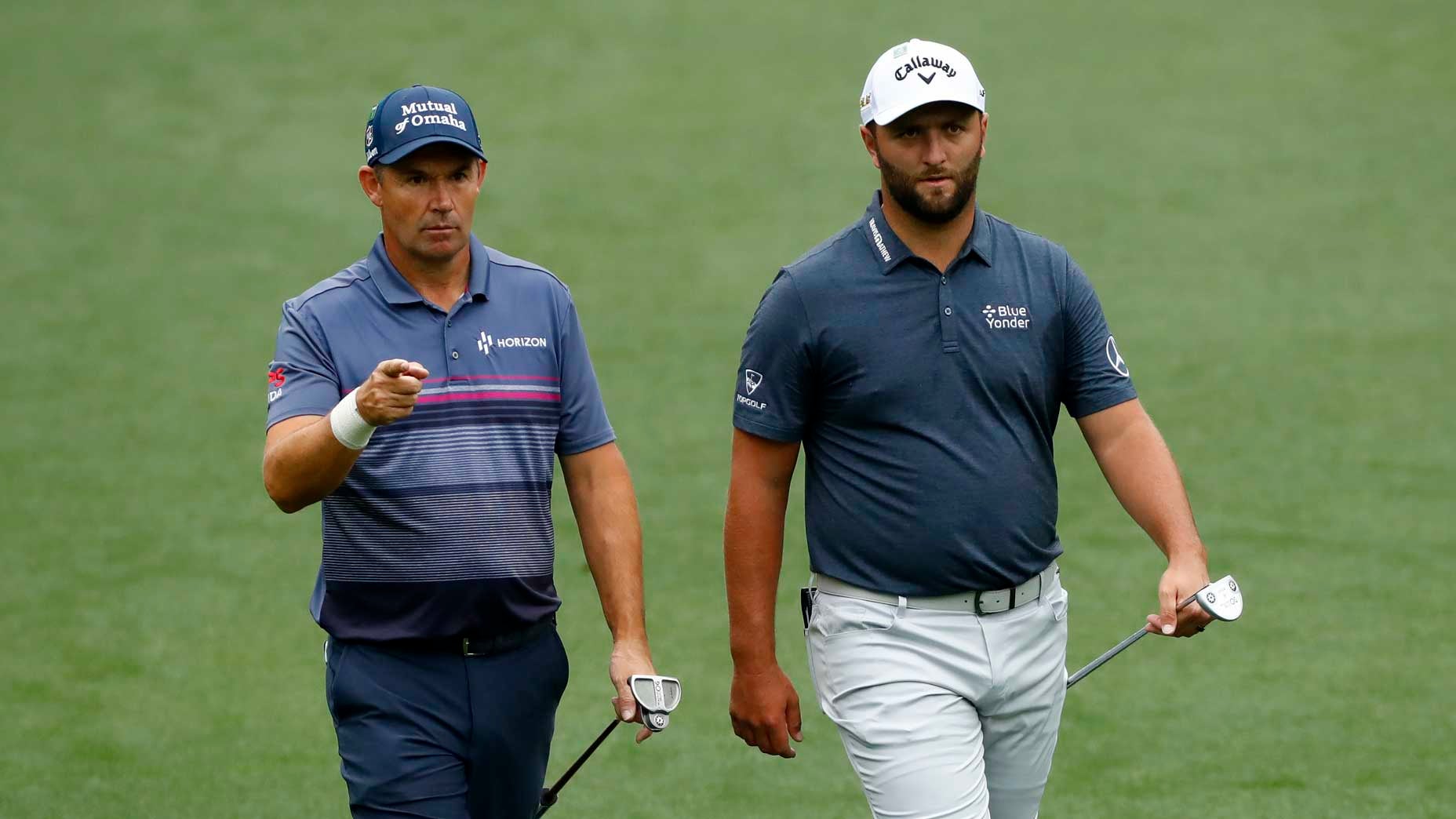‘Roll it back for everybody’: Padraig Harrington’s unpopular short-ball proposal
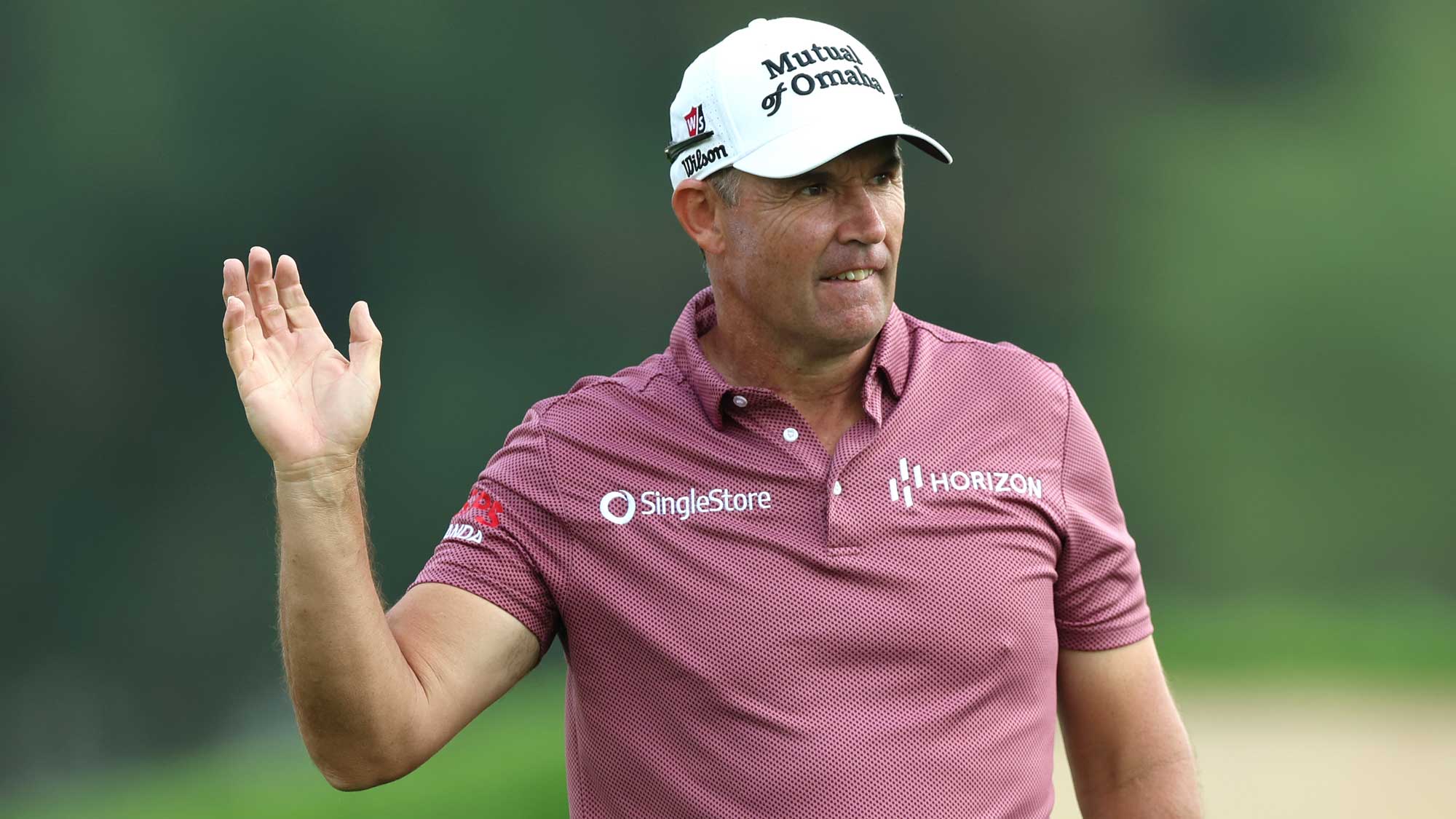
Padraig Harrington at a DP World Tour event earlier this year.
getty images
Padraig Harrington will be inducted into the World Golf Hall of Fame next year for an exceptional playing career that has included 36 professional wins worldwide, including three major titles. If there were also a Thoughtfulness Hall of Fame, Harrington would already have his own wing. Ask him to muse about virtually any topic — wellness, LIV Golf defectors, mid-range bunker shots — and Harrington will likely respond with a measured and well-informed opinion. That’s not to say you need to agree with all of his takes, but at the very least it’s hard not to respect them.
In recent days, then, it should come as little surprise that Harrington has been asked on at least a couple of occasions about the governing bodies’ proposed local rule that would, beginning in 2026, give organizers of professional and elite amateur competitions the option to require their fields to play a slower golf ball. Most Tour pros who have spoken publicly on the matter have expressed deep reservations about the proposal.
In fact, at the PGA Tour Champions event in which Harrington played in Newport Beach, Calif., last week, a few of his fellow pros minced no words when asked about the prospect of a rollback.
“The guys are hitting the ball further because they’re becoming more athletic,” said two-time U.S. Open champion Retief Goosen. “The guys are stronger, and they train to hit the ball further. So really, if they want to bring the ball back, tell the guys stop exercising.” Added Davis Love III: “I would be confused. Like I play the elite ball and then I go home — do I get to play the real ball? It just really doesn’t work. I think hopefully over the next few years cooler heads will prevail.”
Steve Stricker also declared his loyalty to the resistance movement, saying: “We’re in the entertainment business. I was talking about this with Nicki [his wife] and my kids. The Tour is the entertainment business and they want to see birdies; they want to give the fans something to cheer for and say, Wow, look at how far that guy hit it. Now, if some guy goes out there and hits it shorter than your local amateur at your club, what’s so different about that? All of a sudden it’s like, well, this guy over here, Joe, he can hit it further than the pros.”
You could work your way right down the range at just about any professional golf tournament and hear similar feedback, because pro golfers, as a whole, possess a healthy amount of skepticism about any rules modifications that could affect their performances and therefore their livelihoods. That many of those same pros also have contracts with rollback-resistant ball manufacturers — both Love and Stricker are on Titleist’s payroll — could also play some role in how these players form their opinions on the topic.
But then there’s Harrington, who, we should note, is also a Titleist Tour staffer. Earlier in the week, in an appearance on SiriusXM Radio, Harrington vociferously made the case for a rollback, citing a reduction in course construction and maintenance costs; smaller environmental footprints; and a faster pace of play. But at the Newport event, Harrington went even further, peeling back the layers on what is a nuanced debate that “no one argument,” Harrington said, can decide.
As Harrington sees it, the proposed rollback actually doesn’t go far enough.
“To be honest,” he said, “I would prefer they rolled it back for everybody. I don’t like the bifurcation.”
This line of thinking puts Harrington in a small camp. When USGA and R&A executives explained their proposal last Tuesday, USGA CEO Mike Whan said, “the No. 1 feedback we’ve consistently heard for virtually all aspects of the game…is please don’t negatively impact the recreational game and the strength of that game right now.” In other words, forcing weekend golfers to play a shorter ball was never on the table.
But Harrington doesn’t view such a drastic action as a “negative,” because in his mind distance is all relative.
“When it comes to the enjoyment of the game, the enjoyment of hitting a golf ball is hitting it five or 10 yards or 20 yards past where you expect to hit it,” he said. “It’s irrelevant how far it’s gone. I thought I was going to hit it 300, I’ve hit it 310 like this. I thought I was the same distance as my playing partners, I’ve hit it 20 yards past them, chest out. It’s not the actual total distance — it’s the distance compared to your playing partners or to your own expectations that gives you enjoyment.
“So straight away you could roll it back whatever distance you wanted and within a short period of time people will be still having the same enjoyment. Especially amateurs, the same enjoyment. Just would not affect the amateur game whatsoever. It’s relative to what you’re doing. As I said, somebody comes in and says they hit — oh, I hit driver, 6-iron to that par-5. That’s great. Well, if nobody’s hitting driver and iron to that par-5 and you came in and said you hit driver, 3-iron, everybody would be raving about it.
“So the enjoyment is not going to change one little bit by rolling it back, because the enjoyment, as we know in life, is always completely relative to your expectations at that moment in time.”
Yes, we’re dealing in hypotheticals here, because a universal rollback will never happen. But Harrington still raises a fascinating thought exercise for golfers. Do we extract more satisfaction from maximum distance, or relative distance? Is the real joy in golf blasting a ball to the moon, or seeing it bound a few yards past your buddies’ tee shots? If 250 became the new 300, would that diminish your zeal for the game, assuming every other golfer was facing precisely the same challenge?
There’s no correct answers to these questions, but kudos to Harrington for posing them.

